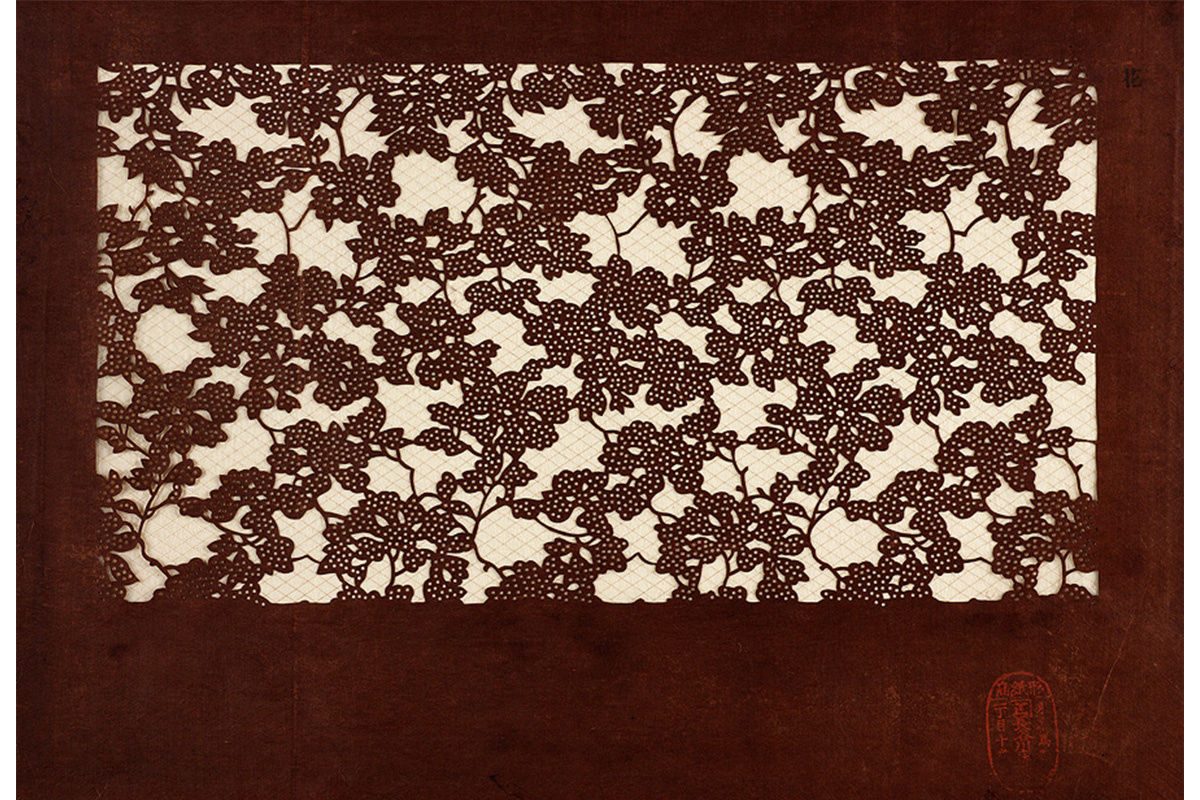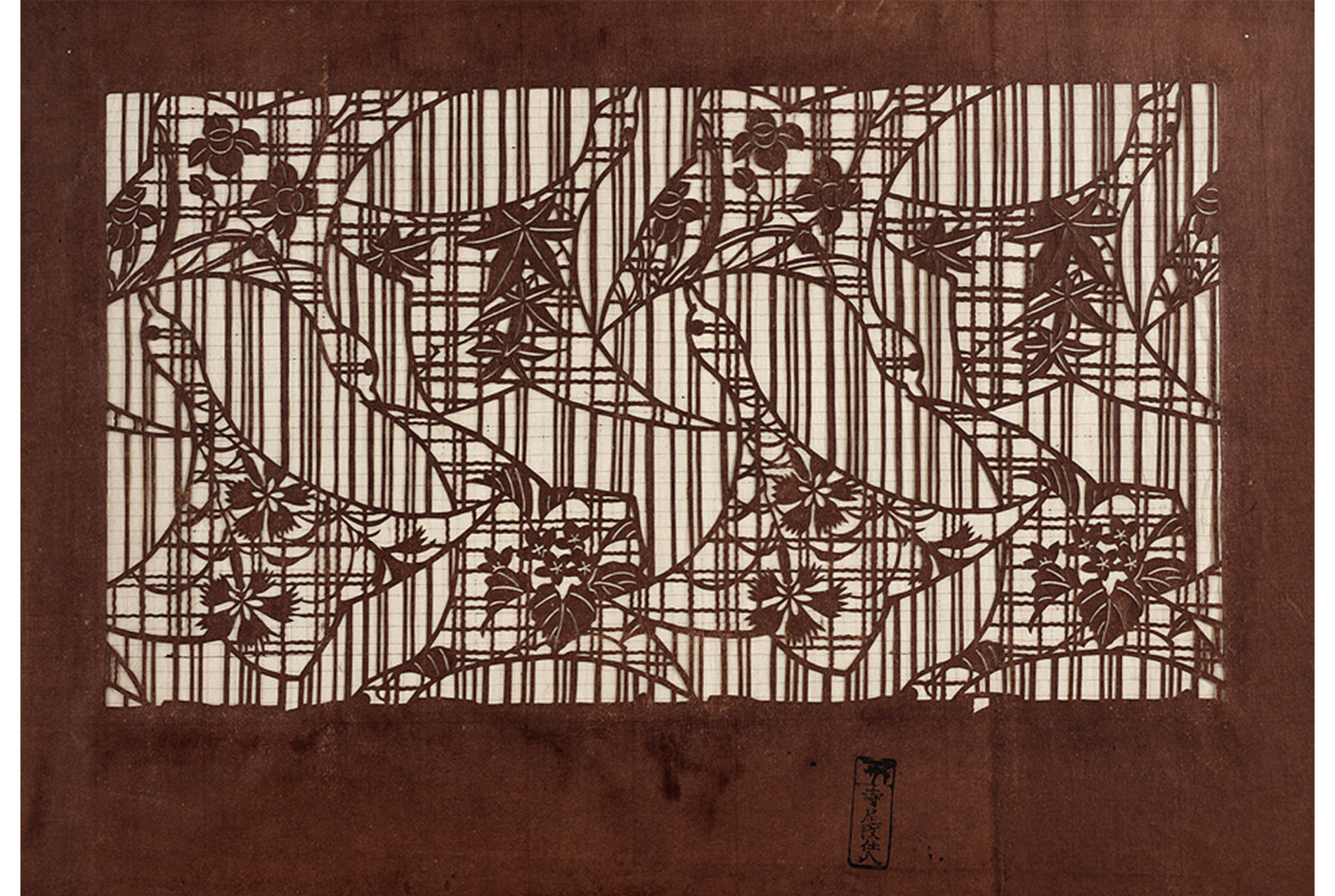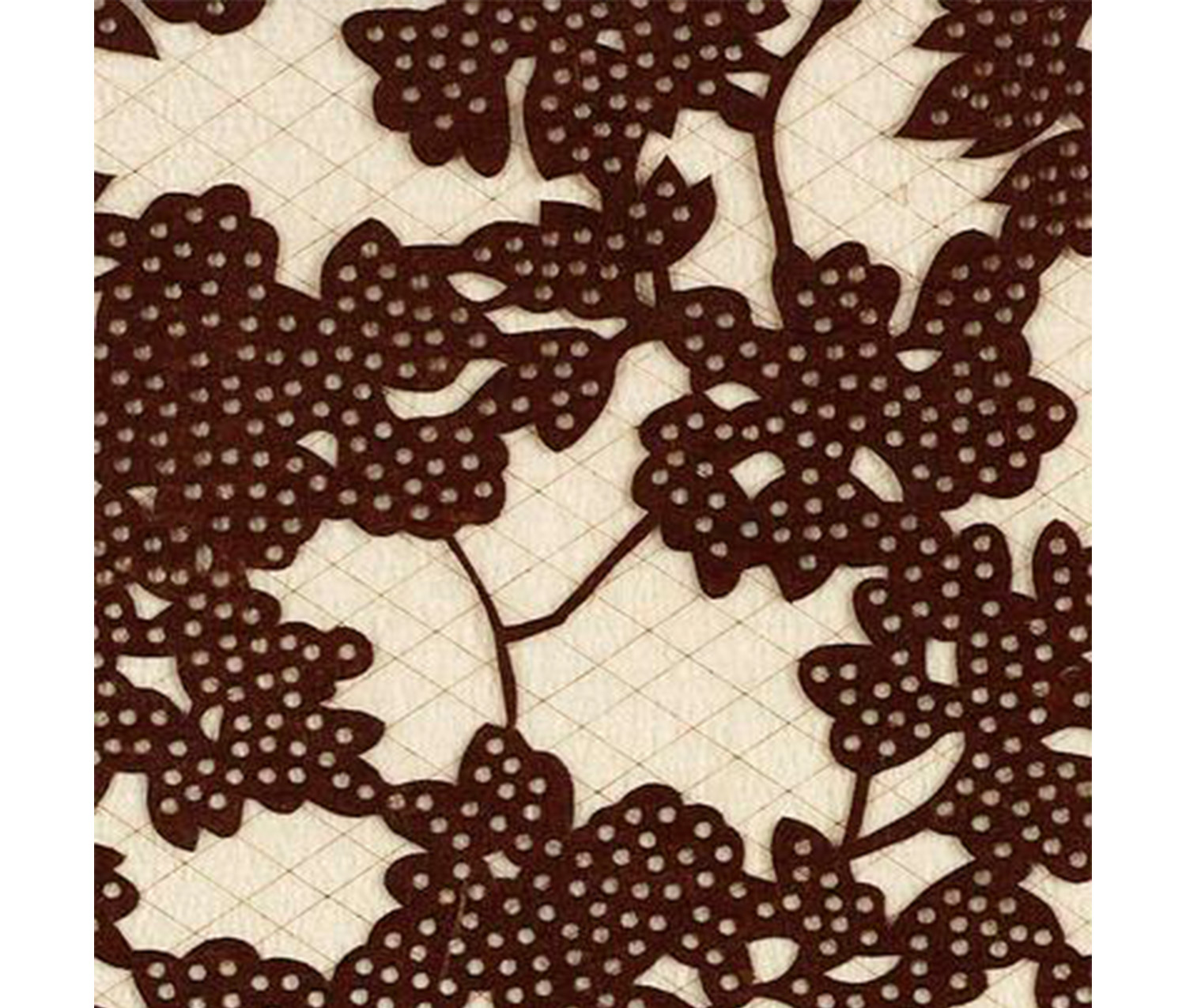
Japanese Stencils
Julie Warchol is the 2012-2013 Brown Post-Baccalaureate Curatorial Fellow in the Cunningham Center.
These 19th century Japanese stencils in our collection prove that, contrary to what one might expect, the tools used to create an artwork can be just as beautiful and impressive as the finished works themselves. Unlike in Western traditions, stencil-making (or katagami) was a renowned art form in Japan. Stencils were most often used for the decoration of kimonos and other textiles.
After Japan’s 200-year long period of cultural isolation ended in the mid-19th century, Westerners were fascinated by the arts of Japan, most notably ukiyo-e woodblock prints. However, tourists were also interested in Japanese textile stencils as art objects themselves for their high level of technical mastery and aesthetics. Artist Blanche Ostertag wrote in 1899 for Brush and Pencil magazine: “What possibilities of color arrangements are suggested by some of these designs! Cotton dresses would be an endless joy were they adorned with any of these stencils, and our silk fabrics, both for household and personal adornment, might become doubly attractive.” The appeal of Japanese stencils lay in the sophisticated integration of the organic with the geometric, using images of birds, flowers, and vegetation as the basis for their designs. In the stencil below, the rhythmic arrangement of flowers and outlines of birds arranged on diagonal axes set against a background of vertical lines creates a sense of stylized motion.

Unknown. Japanese, 19th century. Stencil, n.d. Cut washi paper and silk threads. Gift of Mrs. Howard M. Morse. Photography by Petegorsky/Gipe. SC 1966.76.1.
This high regard for the art of Japanese stencil-making historically coincided with the Arts and Crafts movement which was a late-19th century design reform movement in Europe and America. Such artists responded to increased industrial production by creating hand-made furniture, wall-paper, and ceramics. British Arts and Crafts wall-paper designer George R. Rigby (who made stencils himself) remarked in 1900 that “Japanese stencilling is, to my mind, the only thoroughly successful and considerable use of the craft.”
The process by which the stencils are created is remarkable and is the primary reason why 19th-century Westerners and Japanese alike regarded these objects as artworks themselves. An artist would draw and cut a design by hand, using anywhere from two to six sheets of extremely thin washi paper for one stencil. The sheets were then adhered together with a brown glue made from persimmon, which makes the stencil waterproof and durable. The sheets are often glued with a matrix of raw silk threads between the layers for further reinforcement. Without these threads, the complex designs which often employ lines no thicker than a pencil mark, would not withstand more than one printing. Luckily, the silk threads are so thin, in fact, that they do not show up in the printing. This painstaking process is made even more complicated by creating a brand new stencil each time a different color is to be printed.
